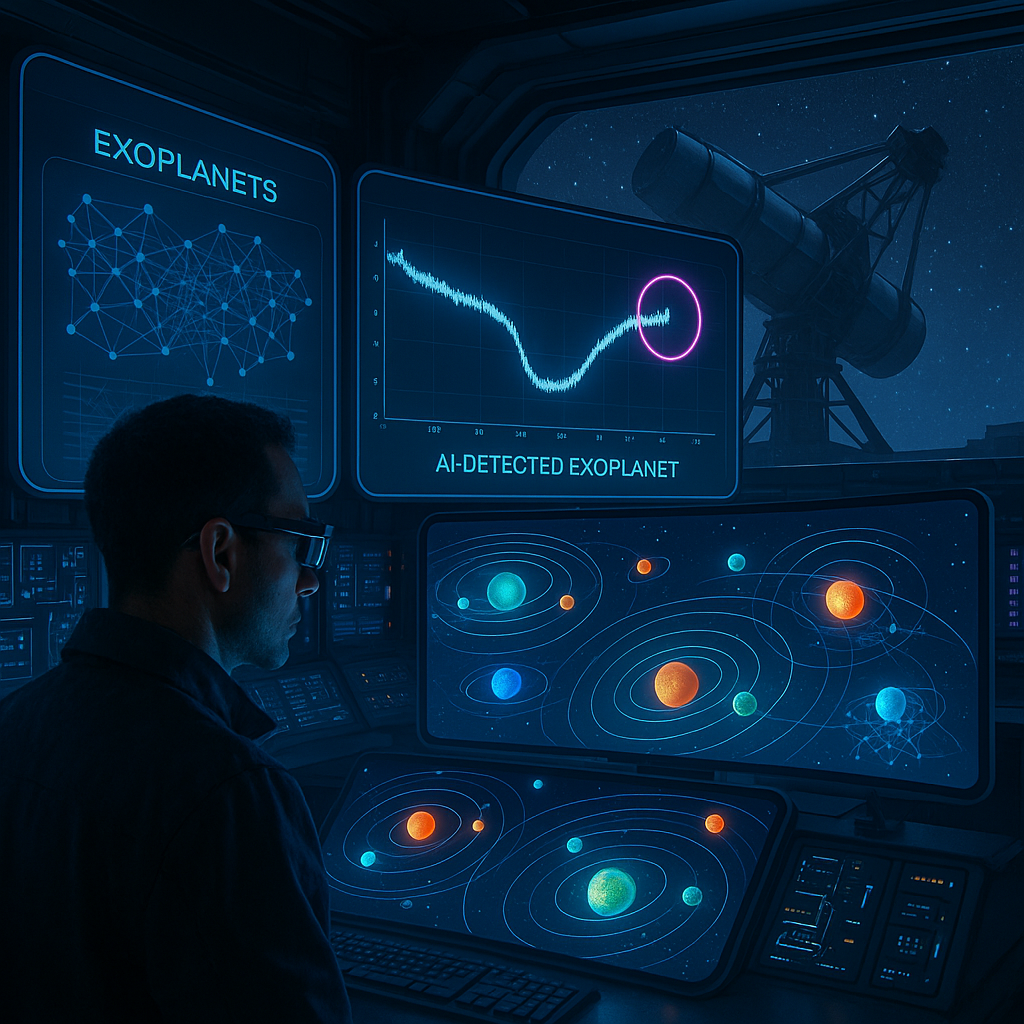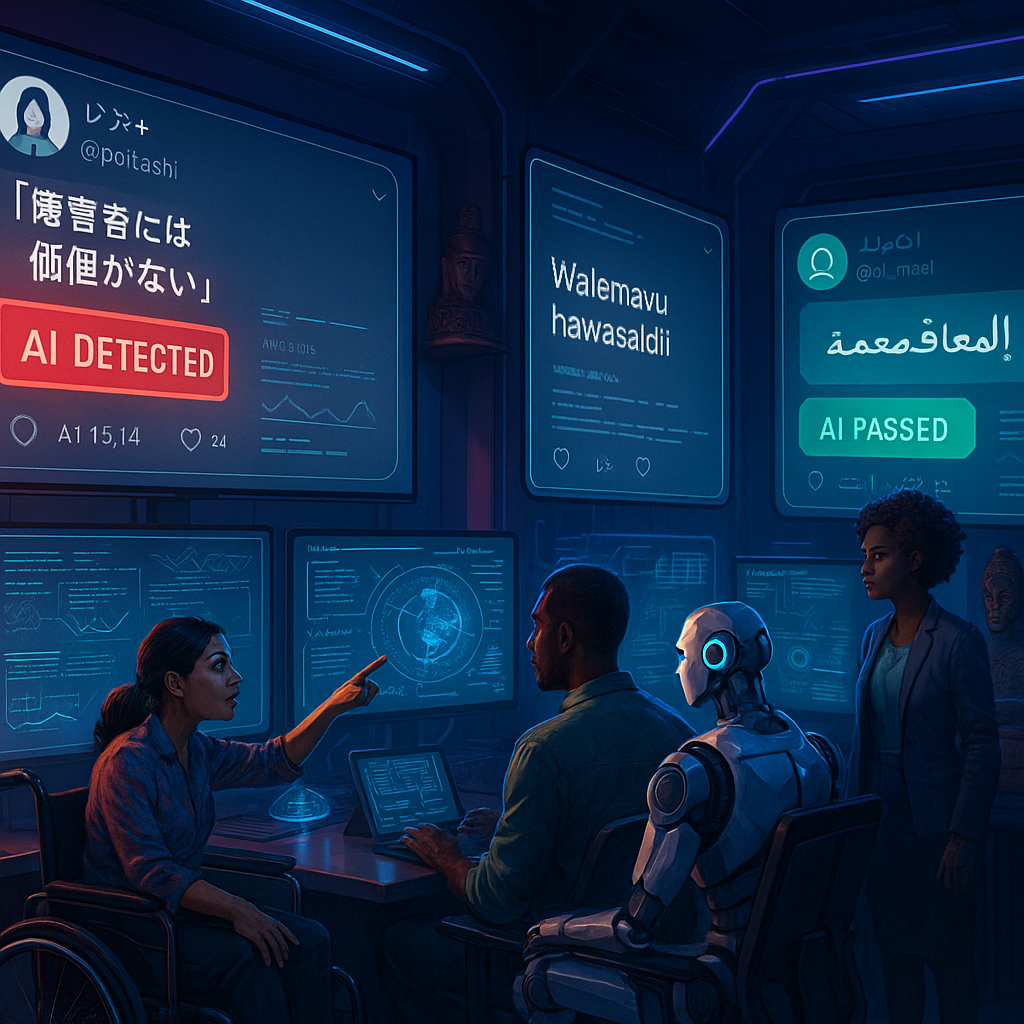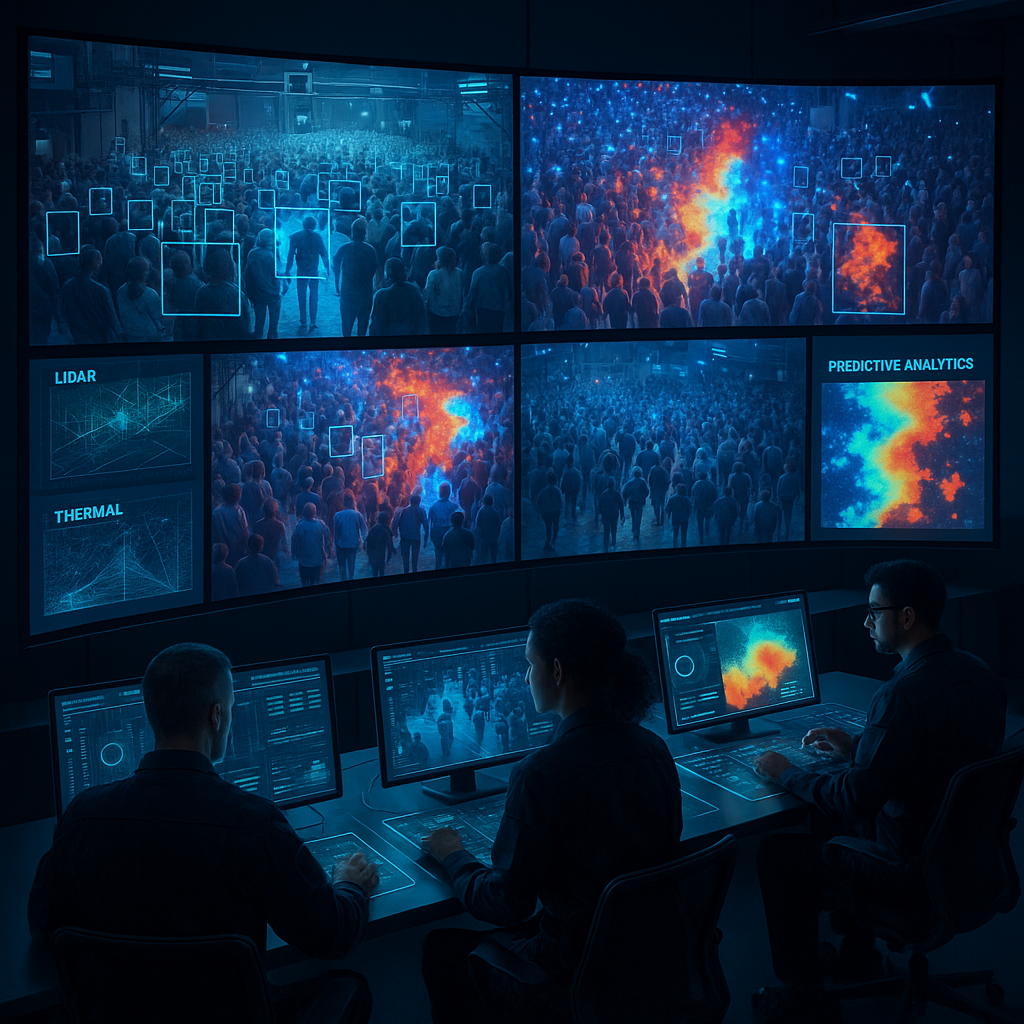Key Takeaways
- Open-source AI is accelerating exoplanet discovery: Platforms like ExoMiner and AstroNet are empowering both scientists and enthusiasts to deploy neural networks and advanced algorithms, automating the detection of planetary signatures within enormous datasets.
- Big data from space is fueling AI breakthroughs beyond astronomy: Vast astronomical surveys, many exceeding 100 terabytes, are not merely enhancing planetary science; they also serve as rich training grounds for advancing general AI capabilities such as weak signal detection and pattern recognition.
- Neural networks master the art of weak signal detection: Deep learning architectures outperform traditional techniques, extracting subtle planet-like signals from noisy data and enabling discoveries such as the multi-planet Kepler-90 system.
- Collaborative platforms democratize the “alien mind” approach to space: Open-source tools and international data-sharing initiatives invite citizen scientists, AI developers, and academics to contribute, dissolving the boundaries between professional astronomy and crowd-powered innovation.
- Astronomical datasets are actively shaped to test and improve AI: The relationship is bidirectional. Astronomers now design data specifically to challenge and evolve AI models, positioning astronomy as a dynamic proving ground for next-generation machine learning.
- AI’s limitations in space science demand interdisciplinary solutions: AI brings superhuman pattern recognition, but interpreting ambiguous signals and resolving astrophysical noise require domain expertise, rigorous validation, and the persistent partnership of human-machine collaboration.
The dynamic interplay between cosmic discovery and computational creativity signals a breakthrough era. The “alien minds” of AI and the unfathomable mysteries of the universe are now propelling each other toward unknown frontiers. In the sections ahead, we’ll explore the essential open-source tools, groundbreaking datasets, and pioneering collaborations that are redefining our search for new worlds and, perhaps, for new forms of understanding altogether.
Introduction
Some of the universe’s most captivating secrets are emerging not just from telescopes and observatories, but also from advanced algorithms. The field of AI astronomy is fundamentally redefining the search for exoplanets. Where astronomers once relied on painstaking manual analysis, they now wield neural networks and open-source tools to parse a deluge of star data, far beyond the capacity of any single human or traditional team.
This transformation is not just a leap in efficiency; it is catalyzing entirely new discoveries and simultaneously reshaping both the practice of space science and the evolution of machine learning. Open platforms like ExoMiner and AstroNet are democratizing the search for exoplanets. They empower scientists, students, and citizen explorers to sift through massive astronomical datasets, finding distant worlds at speeds and with precision previously unimaginable.
As big data from space fuels ever-more sophisticated AI, the boundaries between human ingenuity and computational creativity begin to dissolve. This convergence is ushering in a new paradigm for cosmic exploration, where technology and curiosity challenge each other to reach higher. Now, let’s chart the essential open-source AI astronomy tools and collaborative projects transforming our quest to discover new worlds in the cosmos.
Stay Sharp. Stay Ahead.
Join our Telegram Channel for exclusive content, real insights,
engage with us and other members and get access to
insider updates, early news and top insights.
 Join the Channel
Join the Channel
The Convergence of AI and Astronomical Discovery
Building on the profound synergy between machine learning and astronomy, recent advancements are redefining how we perceive the universe.
Neural Networks in Exoplanet Detection
The search for exoplanets has been transformed by deep learning architectures engineered to analyze the subtle details of stellar light curves. ExoMiner, NASA’s neural network, has set a new standard in distinguishing actual planetary transits from false positives. Its layered approach to light curve data (employing multiple convolutional layers, each attuned to distinctive orbital and stellar patterns) has enabled an unprecedented 93.6% accuracy rate in verified exoplanet identification.
Machine learning algorithms excel at processing astronomical time series, especially in identifying the faint, periodic dimming caused by planets passing in front of their host stars. The open-source AstroNet convolutional neural network has facilitated the discovery of planet candidates in the Kepler dataset, including several Earth-sized planets previously missed by human analysts. Its prowess at parsing weak and ambiguous signals has not only expanded the possibilities for planetary formation studies, but has also yielded novel methods now being adopted in broader scientific contexts.
This innovation is not a one-way street. Astronomical datasets, with their unique challenges of cosmic noise and variable star signatures, have continuously driven improvements in AI. As machine learning adapts to the complexities of real cosmic data, the resulting tools and techniques ripple well beyond astronomy, enhancing fields from statistical modeling to audio signal detection.
Big Data Challenges in Modern Astronomy
As we look closer at the scale of contemporary astronomical research, the magnitude of the data challenge becomes clear. The Vera C. Rubin Observatory is anticipated to generate approximately 20 terabytes of data every night, dwarfing the throughput of many corporate tech giants. Handling this torrent requires not just raw computing power but revolutionary approaches to data management and analysis. Key strategies include:
- Real-time consolidation and processing of simultaneous data streams
- Automated artifact and anomaly detection with minimal manual intervention
- Distributed computing platforms that marshal resources across international research networks
- Sophisticated data compression techniques that preserve the scientific integrity of observations
The NASA TESS mission, for example, has harvested over 200,000 stellar light curves, each brimming with millions of individual data points. Managing this vast archive has spurred essential advances in sparse matrix operations, parallelized data handling, and advanced time-series analysis, all of which have cross-pollinated not only astronomy, but machine learning for climate modeling, financial forecasting, and sensor network optimization.
Open Source Tools and Collaborative Platforms
This need for innovation has fueled a remarkable culture of open-source development within the astronomical community. AstroML, a Python-based toolkit tailored for astronomical datasets, exemplifies this spirit. By equipping users with pre-built models and modifiable neural architectures, AstroML lowers the barrier for newcomers while accelerating the work of experts.
Additional groundbreaking resources include:
- Star-Net, an open neural network designed for the estimation of stellar parameters such as temperature and metallicity
- Galaxy-Net, purpose-built for classifying galaxy morphology within deep-sky surveys
- Astropy, a comprehensive library supporting calculations, visualization, and advanced data analysis in astronomical research
These tools are not confined to specialists. International collaboration and data sharing have eroded barriers between professionals, students, and citizen scientists. The result is a creative feedback loop: each advancement in AI or data science catalyzes new astronomical discoveries, while the idiosyncrasies of astronomical data inspire further evolution of general-purpose machine intelligence.
Future Directions and Emerging Technologies
Looking ahead, AI’s role in astronomy is only intensifying. Quantum computing and hybrid AI systems offer bold new possibilities. Quantum neural networks, capable of encoding and processing spectral data as quantum information, may soon extract delicate planetary signatures hidden in the noise of stellar spectra (tasks that even classical supercomputers struggle to solve).
Emerging priorities for practical tools and platforms include:
- Self-adapting algorithms that dynamically learn and recalibrate in response to new stellar behaviors
- Automated discovery pipelines capable of flagging novel or unknown classes of astronomical phenomena
- Cross-validation frameworks that synthesize results from varied detection strategies, boosting both reliability and robustness
- Real-time analysis tools that enable rapid telescopic follow-up when potential discoveries are flagged
The increasingly tight integration of these technologies is reshaping not only how we collect and interpret astronomical data, but how new theories are conceived and tested. AI is transitioning from a mere assistant to an active collaborator, offering real contributions to the fundamental questions of planetary origins, star life cycles, and galactic structure.
The upstream influence of astronomy on AI continues apace, as the cosmic unknowns we interrogate today generate the very data, puzzles, and boundary cases that are training the next wave of “alien minds.”
Practical Applications and Cross-Industry Impact
The innovations born in the service of cosmic discovery are radiating across disciplines, often in surprising ways. For instance, machine learning models first developed to analyze exoplanet transits are now employed to sift noise from signal in fields as diverse as:
- Medical imaging (enhancing the detection of subtle biomarkers and patterns in radiological scans)
- Climate science (identifying emergent weather patterns and climate anomalies from vast sensor networks)
- Financial analysis (detecting granular market movements and anomalous trading behaviors)
- Telecommunications (optimizing signal clarity and fault detection in distributed networks)
- Legal and regulatory monitoring (deploying anomaly-detection algorithms to identify contract inconsistencies and compliance risks)
A striking example can be seen in medical diagnostics: algorithms honed to identify weak exoplanetary signals in the noisy backdrop of stellar data are now being used to detect faint markers of disease hidden within complex biological datasets, improving early detection rates in oncology and cardiology.
Similarly, time-series analysis techniques developed for astronomy are now powering adaptive learning systems in education and personalized recommendation engines in e-commerce. In environmental monitoring, these algorithms help model climate impact and guide resource allocation in disaster response.
Stay Sharp. Stay Ahead.
Join our Telegram Channel for exclusive content, real insights,
engage with us and other members and get access to
insider updates, early news and top insights.
 Join the Channel
Join the Channel
These cross-industry applications underscore the catalytic role that astronomical AI plays in broader innovation. By tackling some of the most complex, large-scale, and noise-laden datasets in science, AI astronomers are exporting new paradigms that transform research and operations across healthcare, finance, education, environmental science, and beyond.
Conclusion
The fusion of AI and astronomy marks not just an evolution in scientific tools, but a transformation in how humanity approaches the unknown. Neural networks such as ExoMiner and AstroNet are redefining the boundaries of discovery, extracting elusive signals from cosmic static and expanding our comprehension of the universe’s architecture. The sheer volume and complexity of astronomical data press the frontiers of machine learning, propelling innovation in scalable algorithms, data-sharing platforms, and interdisciplinary collaboration.
As quantum neural networks and adaptive, self-improving systems emerge, we are entering an era where machines do not simply assist human curiosity; they actively shape and provoke it, setting new agendas in both observation and theory. The breakthroughs achieved here ripple outward, forging transferable technologies that are already transforming medicine, climate science, education, finance, and legal analytics.
Looking forward, those who embrace open collaboration and invest in ever-adaptive, data-driven strategies will set the pace in both science and industry. Whether through cross-disciplinary teamwork, bold investments in future-facing AI, or the cultivation of accessible and ethical open-source ecosystems, the next era of discovery awaits those willing to harness both alien minds and human insight.
In our search for distant worlds, we are not just pioneers of space but architects of the next intelligence. Each step outward compels us to evolve inward, shaping tools and minds that illuminate not only the universe, but the possibilities latent within ourselves. The real test will be how creatively, responsibly, and collaboratively we use these emerging “alien minds” to explore worlds undreamt of, both above and within.





Leave a Reply